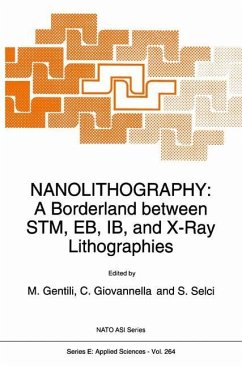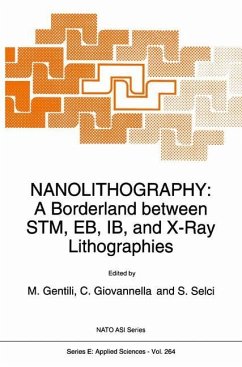
Handbook of Molecular Force Spectroscopy

PAYBACK Punkte
57 °P sammeln!
Modern materials science and biophysics has increasingly focused on studying and controlling intermolecular interactions on the single-molecule level. The peer-reviewed literature contains an increasing number of studies that either measure the interaction forces directly or use mechanical forces to deform the molecules or trigger structural transitions. Molecular force spectroscopy is the result of unprecedented advances in the capabilities of modern force measurement instruments in the past decade and describes a number of techniques that use mechanical force measurements to study interactio...
Modern materials science and biophysics has increasingly focused on studying and controlling intermolecular interactions on the single-molecule level. The peer-reviewed literature contains an increasing number of studies that either measure the interaction forces directly or use mechanical forces to deform the molecules or trigger structural transitions. Molecular force spectroscopy is the result of unprecedented advances in the capabilities of modern force measurement instruments in the past decade and describes a number of techniques that use mechanical force measurements to study interactions between single molecules and molecular assemblies in chemical and biological systems. Examples of these techniques include atomic force microscopy, optical tweezers, surface forces apparatus, and magnetic tweezers. These techniques typically target a specific range of experimental systems and geometries, but all use mechanical force transducers to apply and detect nanonewton range forces between single molecules in condensed phases.
Molecular force spectroscopy measurements have been very important for studies of adhesion and friction forces, where they provided the first truly nanoscale capabilities. Force spectroscopy has been instrumental in understanding mechanical properties and nanoscale dynamics of polymer systems from elasticity to nanoscale phase segregation. In biophysics, applications range from probing protein folding to direct mapping of intermolecular interaction potentials. This volume presents a review of modern force spectroscopy, including fundamentals of intermolecular forces, technical aspects of the force measurements, and practical applications. The Handbook begins with a review of fundamental physics of loading single and multiple chemical bonds on the nanometer scale with a discussion of thermodynamic and kinetic models of binding forces and dissipation effects in nanoscale molecular contacts, covers practical aspects of modern single-molecule level techniques, and concludes with applications of force spectroscopy to chemical and biological processes. Computer modeling of force spectroscopy experiments is addressed as well. In sum, Handbook of Molecular Force Spectroscopy is a comprehensive, authoritative guide to planning, understanding, and analyzing modern molecular force spectroscopy experiments with an emphasis on biophysical research.
Molecular force spectroscopy measurements have been very important for studies of adhesion and friction forces, where they provided the first truly nanoscale capabilities. Force spectroscopy has been instrumental in understanding mechanical properties and nanoscale dynamics of polymer systems from elasticity to nanoscale phase segregation. In biophysics, applications range from probing protein folding to direct mapping of intermolecular interaction potentials. This volume presents a review of modern force spectroscopy, including fundamentals of intermolecular forces, technical aspects of the force measurements, and practical applications. The Handbook begins with a review of fundamental physics of loading single and multiple chemical bonds on the nanometer scale with a discussion of thermodynamic and kinetic models of binding forces and dissipation effects in nanoscale molecular contacts, covers practical aspects of modern single-molecule level techniques, and concludes with applications of force spectroscopy to chemical and biological processes. Computer modeling of force spectroscopy experiments is addressed as well. In sum, Handbook of Molecular Force Spectroscopy is a comprehensive, authoritative guide to planning, understanding, and analyzing modern molecular force spectroscopy experiments with an emphasis on biophysical research.














